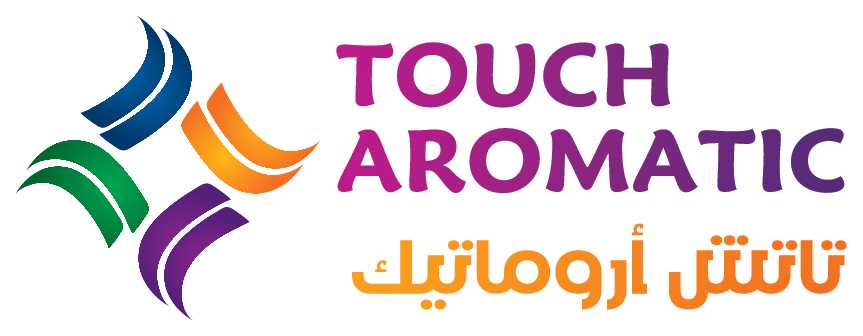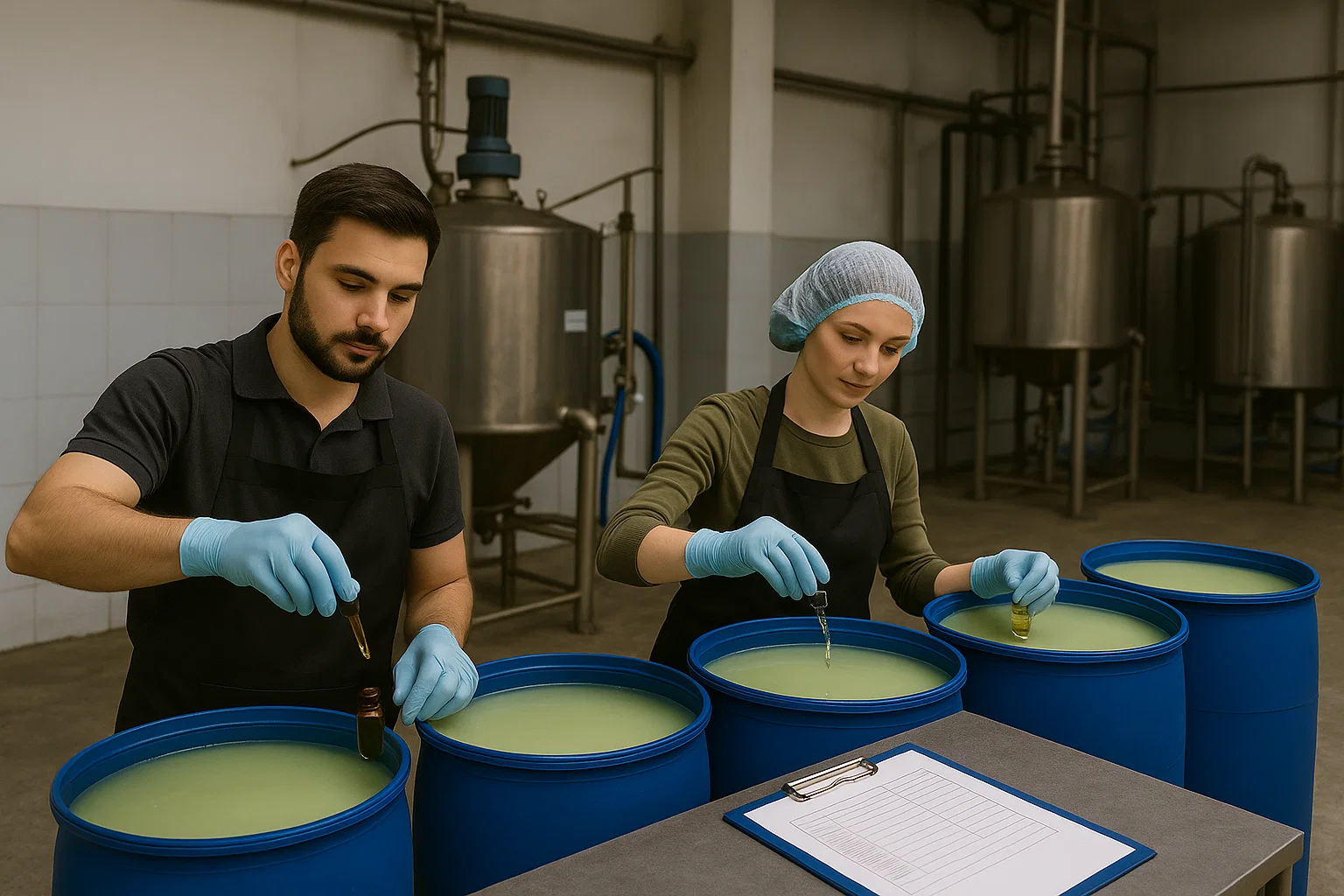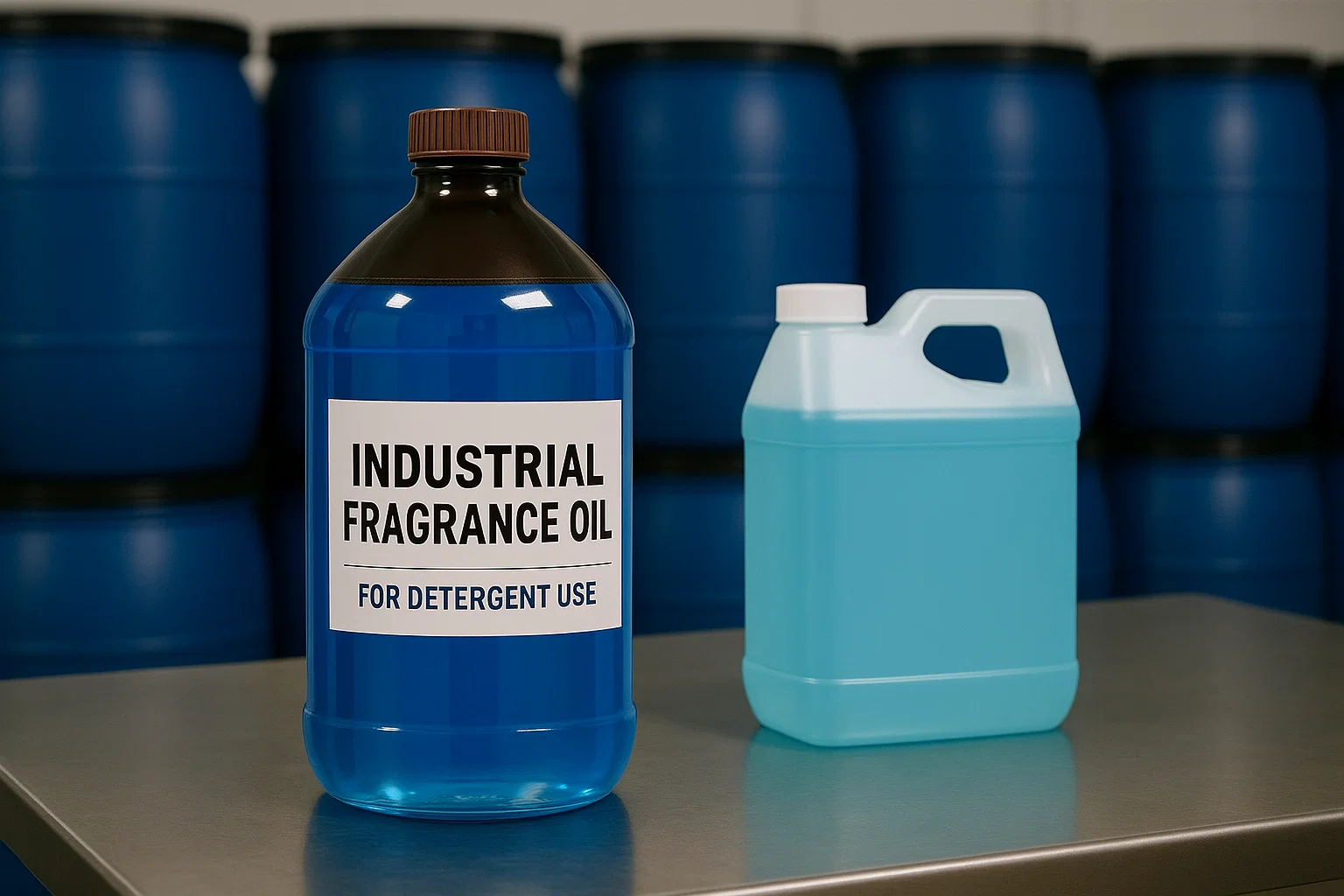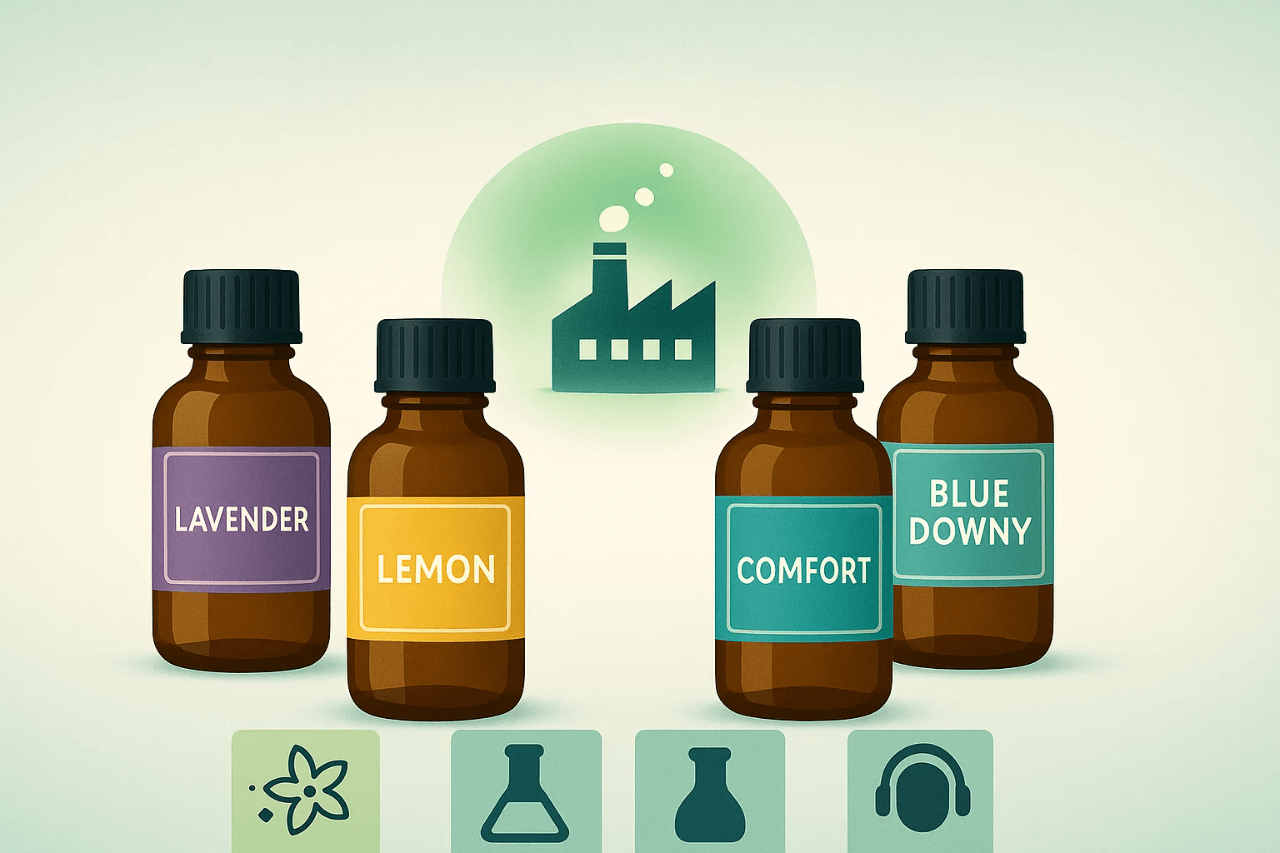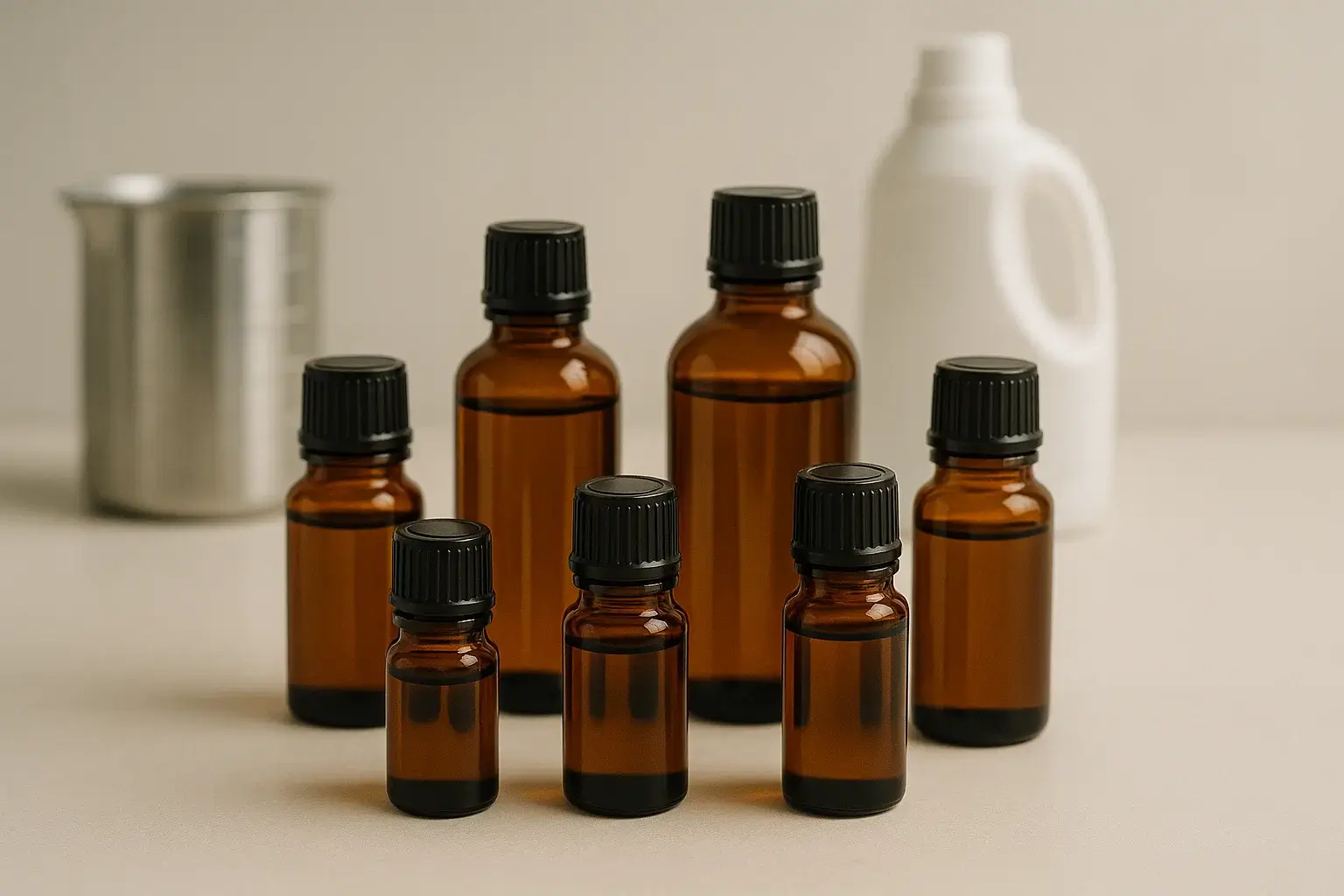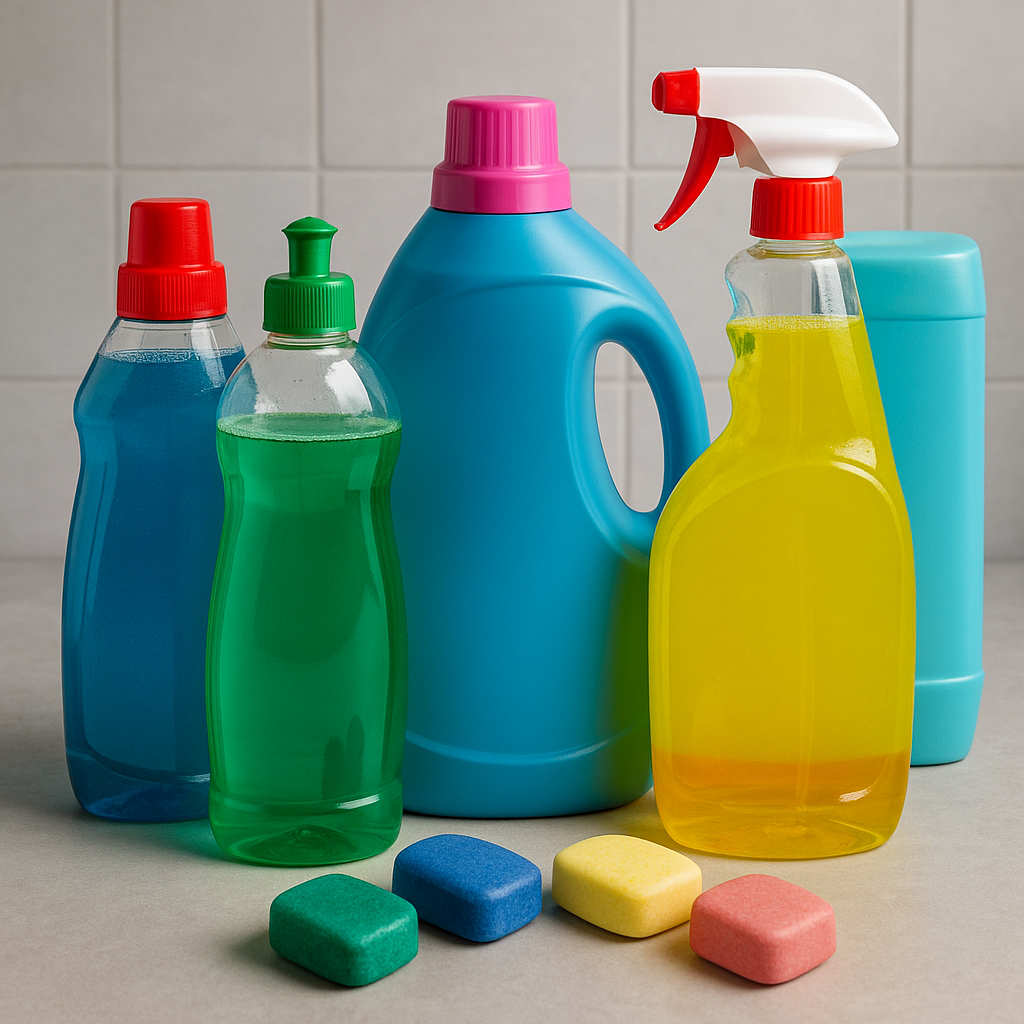The Importance of Colors in the Detergent Industry
In the world of chemical manufacturing, the quality of a detergent is no longer measured solely by its cleaning power, but also by the final appearance it presents to the consumer. This is where the importance of colors in the detergent industry comes into play, as they play a vital role in attracting attention, building a clear visual identity for the product, and enhancing the perception of cleanliness and freshness.
Today’s consumers often associate the color of a detergent with its scent or purpose. For example, many prefer blue detergents as a symbol of deep cleaning, while others choose green to represent natural and eco-friendly products. These preferences are directly translated into production decisions on the factory floor, making color selection a strategic choice, not merely a cosmetic one.
Types of Colors Used in Liquid and Powder Detergents
The types of colors for detergents vary depending on the product form (liquid or powder), chemical composition, and intended use. Generally, the colors fall into three main categories:
● Colors for Liquid Detergents
These typically rely on highly water-soluble dyes that ensure the color remains stable and does not settle or degrade upon dilution. These dyes are tested for stability in both alkaline and acidic environments and their resistance to different temperature ranges during mixing and packaging.
● Colors for Powder Detergents
Powder products require heat-resistant and chemically stable pigments that can endure grinding and dry blending, while maintaining their hue throughout extended storage periods. Often, these colors are partially insoluble to ensure they remain evenly distributed in the final product.
● Natural vs. Synthetic Colors
With the growing trend toward sustainable products, some manufacturers opt for plant-based natural colors. However, synthetic dyes remain the most common choice due to their superior stability, lower cost, and availability in industrial quantities.
Factors Influencing Color Selection in Detergent Manufacturing
Choosing the right colors for detergents is not a random decision; it’s driven by a combination of technical and marketing considerations. Among the most important factors are:
Chemical composition of the formula: Certain formulations may react with specific dyes, causing the color to change or degrade over time. Therefore, it is essential to ensure that the chosen color is fully compatible with the active ingredients in the product.
Type of usage: Industrial or medical cleaning products often require neutral or transparent colors to avoid staining surfaces. In contrast, laundry or floor cleaners may feature bright, vibrant colors that reflect their strength or scent.
Consumer behavior: Market research often guides color selection based on consumer preferences. For instance, disinfectants are often blue, while eco-friendly products are green—these color associations directly impact purchasing decisions.
All of these elements make it clear that color is not just a matter of appearance, but a critical factor in the technical success and commercial appeal of any detergent product.
The Role of Colors in Marketing and Product Differentiation
In a highly competitive market, color can often be the first element that captures the customer’s attention. Colors for detergents play a significant role in:
Brand identity: Consistent use of specific colors helps customers quickly recognize the product on the shelf and associate it with the brand.
Function-based color coding: Color is frequently used to indicate the product’s purpose—for example, pink for fabric softeners, orange for bathroom cleaners, or green for eco-friendly formulations.
Emotional and psychological influence: Blue evokes a sense of freshness, green suggests natural and calming properties, and red signifies power and effectiveness. These psychological cues strongly influence consumer choices.
This is why leading detergent manufacturers invest in developing distinctive and cohesive color schemes aligned with their branding and marketing strategies. The right color not only enhances shelf appeal but also builds brand loyalty and drives repeat purchases.
Technical Standards and Quality Requirements for Detergent Colors
From an industrial perspective, the use of colors for detergents is governed by strict technical standards that go far beyond appearance. To ensure product stability, performance, and consistency during manufacturing and storage, the colors must meet specific quality benchmarks.
Key requirements include:
Heat resistance: During production, especially for high-concentration or industrial detergents, materials are often exposed to elevated temperatures. The dyes must be able to withstand these conditions without fading or altering their hue.
Chemical stability: The selected color must remain stable in either alkaline or acidic environments, depending on the formula. It should not interact negatively with active ingredients or alter the product’s efficacy.
Solubility and dispersion: For liquid detergents, the dye must dissolve completely without forming sediment. In powders, it must distribute evenly throughout the mixture to ensure color consistency across the batch.
These characteristics fall under what is known as industrial-grade color quality, making the choice of a reliable supplier a vital step in achieving a stable and high-performance final product.
Touch Aromatic Colors – Professional Solutions for Detergent Manufacturing
When looking for a trusted supplier that offers colors for detergents with precise industrial-grade quality, Touch Aromatic stands out as an ideal partner for manufacturers in Egypt and beyond. With extensive experience in supplying essential oils and specialized raw materials, Touch Aromatic has developed a versatile range of colorants tailored to meet the demands of the detergent industry.
What sets Touch Aromatic apart is its ability to combine high technical performance with ease of integration into production lines, without the need for additional stabilizers or modifications. Key advantages include:
Excellent pH and chemical stability: The dyes maintain their hue in both acidic and alkaline formulations, making them suitable for a wide range of detergent products.
Fast and even blending: Whether used in liquid or powder products, Touch’s dyes mix smoothly and uniformly, reducing production time and effort.
Wide range of shades available: Whether you're seeking a classic blue, a natural green, or a custom color that reflects your brand identity, Touch offers an extensive color library to choose from.
Technical support services: Beyond supplying dyes, the company provides expert consultation to help manufacturers select the right color and calculate precise usage rates based on product type and batch size.
Compliance with regulatory standards: All Touch Aromatic colorants meet Egyptian and international regulations, ensuring they can be safely used in home care or industrial cleaning products.
In short, if you're seeking a supplier who can offer dependable quality, customizable solutions, and expert support, Touch Aromatic delivers a full suite of color solutions that strengthen your product’s performance and market appeal.
Common Mistakes When Using Colors in Detergent Production Lines
Despite advancements in manufacturing technology and the availability of high-quality raw materials, many factories still fall into recurring errors when using colors for detergents. These mistakes can result in poor product quality, unstable formulas, or a damaged brand image. The most common issues include:
Using non-specialized or low-grade dyes
Some manufacturers—particularly smaller operations—opt for general-purpose or low-cost dyes that are not designed for detergent formulations. These may not withstand production conditions or may interact poorly with other ingredients, leading to color fading or unwanted sediment.
Adding the dye at the wrong stage of production
The timing of color addition plays a key role in the final product’s stability. Some formulations require the dye to be added early, while others benefit from late-stage addition. Getting this wrong can result in uneven distribution or degradation of the color.
Skipping small-batch testing
Approving a color without prior testing on small production runs is a common error. Since each facility has different operating conditions (e.g., temperature, pH, equipment), it's critical to validate the dye’s performance under real-world conditions.
Over- or under-dosing the dye
Using too much dye can result in overly intense or visually unappealing colors, while using too little may produce a faded or washed-out look. Accurate dosing—based on supplier recommendations—is essential for consistent results.
Neglecting regulatory compliance
Certain dyes may be restricted in products meant for food-contact surfaces or children's items. Manufacturers must ensure that their color choices comply with national and international health and safety regulations.
Avoiding these common pitfalls not only improves product quality but also protects your brand reputation and helps reduce waste and production costs.
Compliance with Health and Environmental Regulations in Egypt
With regulatory frameworks evolving rapidly, adherence to safety and quality standards has become a crucial factor in determining the market success of any industrial product. When it comes to colors for detergents, special care must be taken to ensure that all materials used are fully compliant with Egyptian laws—particularly those issued by the National Food Safety Authority, the Consumer Protection Agency, and the Ministry of Health.
Key regulatory considerations include:
Safe chemical composition: The dye must be classified as non-hazardous for use in household or industrial cleaning products, especially those that may come into contact with skin or food-preparation surfaces.
Free from banned heavy metals: Some otherwise effective dyes may contain banned substances like lead or mercury. Manufacturers should only work with suppliers that provide certified Certificates of Analysis (COAs) confirming the absence of such contaminants.
Proper labeling and classification: All industrial cleaning products must clearly indicate the colorants used, following the Globally Harmonized System (GHS) for hazard classification and labeling. This helps avoid legal liabilities and facilitates safe handling and export.
Environmental safety: With the growing focus on sustainability, manufacturers are encouraged to use dyes that do not leave harmful residues in wastewater or contribute to environmental pollution during production or usage.
Touch Aromatic ensures that all its colors for detergents are fully compliant with both Egyptian and international regulatory requirements, giving manufacturers peace of mind and reducing the burden of documentation and testing.
In today’s competitive landscape, where brands fight for consumer attention and trust, colors for detergents have become a strategic asset. A product’s color is no longer just a decorative feature—it’s a powerful tool for conveying identity, enhancing the sensory experience, and creating instant recognition on crowded retail shelves.
From a manufacturing standpoint, the right color choice enhances chemical stability, streamlines production, and reduces return rates caused by inconsistent appearance. From a marketing perspective, it directly influences the purchasing decision by aligning the product’s look with the consumer’s expectations—whether that’s freshness, cleanliness, or natural appeal.
For factories and producers, partnering with a trusted supplier like Touch Aromatic offers a real competitive edge. The company combines a wide variety of shades, strict quality control, regulatory compliance, and expert support services that make it easier to integrate the perfect color into your production process.
If you're serious about product quality, brand consistency, and market performance, don’t overlook the details—color is one of the most important details. Choose it wisely. Choose it strategically. And above all, choose it from a supplier you can rely on.
